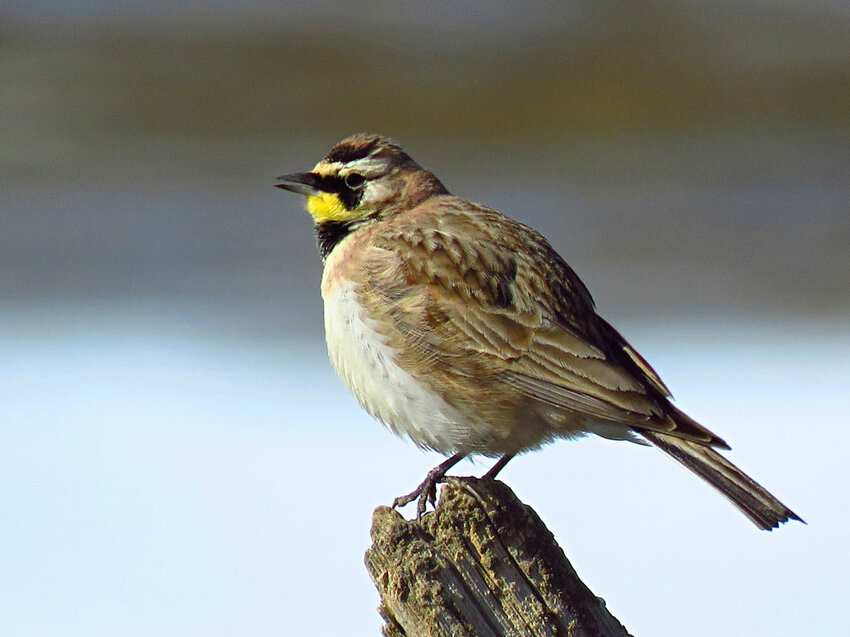
Photo courtesy Charles Martinez
This week’s Bird of the Week, compliments of the Weminuche Audubon Society and Audubon Rockies, is the horned lark.
This bird is common in treeless, sparsely vegetated habitats which are inhospitable to many other songbird species. They avoid areas where grass is over 2 inches tall, living instead in open areas from sea level to 13,000 feet which include overgrazed pastures, beaches, deserts and tundra.
Across most of the lower 48 states they are resident birds. Some breed across regions in Alaska and Canada but they avoid the boreal forest regions so important to the estimated 5 billion of North America’s birds which nest there. Instead, these horned larks spend the summer on the open tundra, retreating south for the winter.
At this time of year, horned larks are commonly spotted here in areas along Roush Drive when they flush from the ground in a low, twisted flight. Both sexes have cryptically colored plain brown backs. Their face markings with pale yellow extending from the neck, a black mask, head stripe and breastband are bold. Curled tufts of black feathers which can be erected at will are the “horns” in this lark’s name.
Males don’t wow potential mates with bright coloring. Instead, they capture a female’s attention with dramatic aerial displays. After ascending straight up for hundreds of feet, he circles and sings his “tinkling” song for several minutes before diving headfirst to the ground where he raises his horns and struts before a female.
Where conditions allow, horned larks begin nesting as early as February and may raise three broods per year. The female builds her nest, and a walkway paved in pebbles, in a shallow depression on the ground. In hot weather she will stand with wings spread to shade her eggs and chicks.
Despite remaining numerous, Partners in Flight lists the horned lark as “a common bird in steep decline” due to long-term population trends.
For information on events, visit www.weminucheaudubon.org and www.facebook.com/weminucheaudubon/.